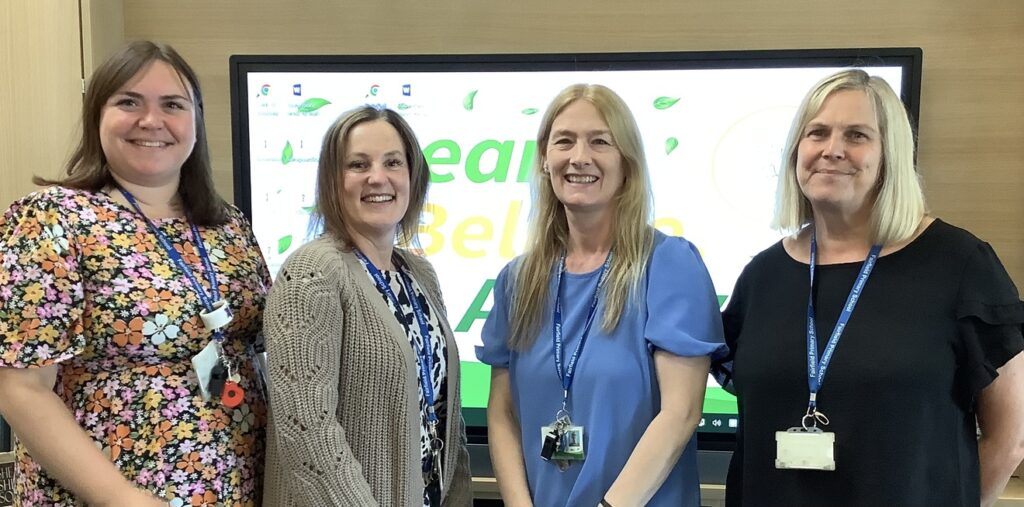Meet the Reception Team
- Mrs M Strachan – Teacher
- Mrs R Cooke – Teacher
- Mrs J Thomas – Teaching Assistant
- Mrs J Beaumont – Teaching Assistant

Phonics
What Is Phonics?
Phonics is a way of teaching children how to read and write by helping them connect letters (graphemes) with the sounds (phonemes) they make.
Why Is Phonics Important?
Phonics gives children the tools to:
- Sound out words (e.g., c-a-t → cat)
- Read new words by blending sounds together
- Write words by breaking them into sounds
How Does It Work?
1. Learning Sounds
Children first learn that each letter (or group of letters) makes a sound.
2. Blending Sounds to Read Words
Once they know the sounds, they can blend them to read.
Example:
- s-a-t → sat
- p-i-n → pin
3. Segmenting Words to Write
They also learn to break words into sounds to spell them.
Example:
- dog → d-o-g
- ship → sh-i-p
4. Tricky Words
Some words don’t follow regular phonics rules (like “the” or “said”). These are called tricky words, and children learn them by sight.
How You Can Help at Home
- Practice sounds using flashcards or games
- Listen to your child read their phonics books
- Sound out words together
- Look at the Little Wandle website for details on how we teach https://www.littlewandle.org.uk/resources/for-parents/
- Celebrate effort – phonics takes practice!
Reading books
From October, we use Little Wandle reading books which are matched to your child’s reading level. Children read their book with staff in school for one week then this goes home to read for one week.
We always find that children have a greater success when reading if they practice at home, in short but regular intervals.
Your support will be much appreciated and will help your child to be a confident reader.
Maths
In Reception, Maths is taught through play-based, hands-on learning that helps children to explore numbers, shapes, patterns, and simple problem-solving in everyday contexts.
Lots of Maths happens during play in our classrooms and outside areas. We use real objects like counters, toys, or fruit to explore counting and problem-solving.
Maths is woven into our everyday routine, for example. counting children, discussing the date, or sharing snacks equally. We encourage children to talk about what they’re doing and explain their thinking.
Our focus is on building confidence and enjoyment in Maths.
PE days
PE takes place every Friday.
Children come into school in their PE kit and enjoy a variety of lessons both inside our hall and outside on our field.
Homework
Weekly homework consists of phonics or early reading activities.
It will be given out on a Friday and will be due back into school by the following Wednesday.
Please do not feel that you need to spend a long time doing the homework that we provide; our intention is to use this book mainly as a way of communicating what your child has been doing in phonics, and providing a way for your child to show you what they can do!
Numbots is an app that children can use to support their Maths learning in school.
We will provide a username and password.
Access to this will be given out later in the academic year when we have covered the appropriate number facts in class first.
Other:
- A Reading Meeting for parents/ carers to find out more about Phonics and reading in Reception to be held in Autumn term.
- Christmas Nativity performance in December.
- Visit to Fairfield Library in Spring term.
- School Trip to Hardwick Park in Summer term.
- Seesaw – we provide parent code to access the photos of their child’s learning.

